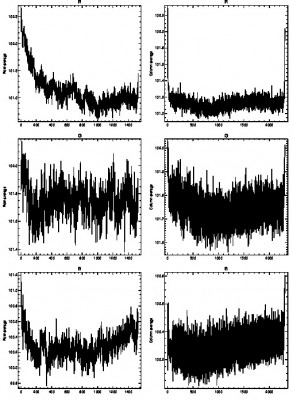Using modelling of the Sun-Earth-Moon system it is possible to show that there will be an airmass-dependency in the derived terrestrial albedo. This is due to extinction being colour-dependent and the presence of spectral slopes. The BS is more red than the DS so extinction will relatively influence the DS more than the BS. In monochromatic light the DS and BS would be affected identically by extinction. As our method depends on modelling the DS/BS flux ratio we must either model that colour dependency in the extinction, or correct for the effect with traditional Langley plots of -2.5 log10 (Albedo) vs airmass.
The challenge in modelling the effect is to make avilable wavelength dependent lunar albedo maps and apply them appropriately for the DS and BS individually. LRO maps are wavelength dependent, but correctly representing the colour of the DS and BS seems a bit on the difficult side since we are at the very least dealing with a variable-colour DS.
With narrow filters the problem is less.
This implies that a better future system ought to be based on narrow filters – or on spectroscopy?
It also seems to imply that there will be a signal from terrestrial albedo in the slopes of albedo against airmass. So, when all data are fitted, look for an Albedo vs slope-of-Albedo-vs-airmass relationship.



